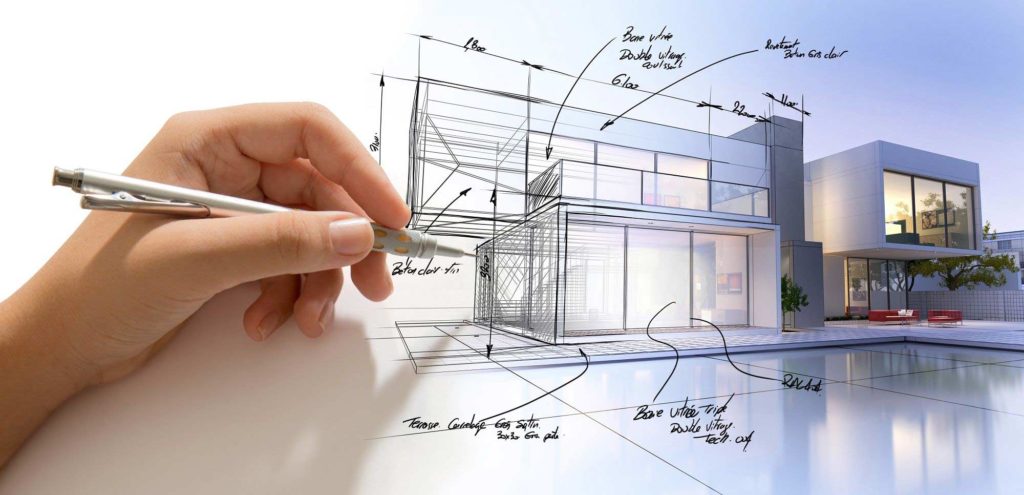Understanding the Diverse Career Paths Available for Aspiring Architect
As a hopeful Architect, you have a world of profession courses waiting on you. Each course provides one-of-a-kind difficulties and possibilities to apply your creative thinking and technical knowledge. Whether you're attracted to conventional style or the nuances of lasting layout, there's a specific niche that straightens with your interests. Comprehending these varied options can form your specialist journey, however which instructions will you pick to explore initially?
Traditional Design: Designing Frameworks and buildings
Typical design concentrates on designing structures and frameworks that blend capability with visual charm. Your designs can show cultural heritage, showcasing neighborhood customs while satisfying contemporary requirements.
You'll establish abilities in composing, model-making, and site evaluation, permitting you to visualize and interact your ideas properly. Involving with clients, you'll require to comprehend their vision and convert it right into viable styles.
Moreover, building codes and sustainability techniques are crucial in your job, guaranteeing your structures are eco pleasant and secure. As you expand in your job, you'll find possibilities in household, industrial, or even remediation projects, each offering one-of-a-kind obstacles. Embracing standard style leads the way for a satisfying job that admires the past while forming the future.
Urban Planning: Shaping Communities and Public Spaces
As an aspiring Architect, you can play a crucial function as an urban planner, changing just how neighborhoods function and communicate. By using neighborhood involvement approaches, you'll assure that locals have a voice in shaping their atmosphere. And also, incorporating sustainable layout concepts will assist develop spaces that not just fulfill today's requirements yet additionally shield the future.
Duty of Urban Planners
While numerous might think about designers as the single enthusiasts behind structures, city planners play a necessary role fit the more comprehensive landscape of areas and public rooms. They analyze land use, zoning regulations, and community needs to produce lasting settings that enhance lifestyle. By working together with numerous stakeholders, you'll help develop parks, transport systems, and houses that promote social communication and accessibility. Urban planners likewise focus on ecological factors to consider, making certain that developments integrate green spaces and support biodiversity. Your experience in spatial layout and area characteristics permits you to envision future growth while preserving social heritage. In this essential function, you'll directly influence how people experience their surroundings, making every project a possibility for favorable adjustment.
Area Involvement Approaches
Efficient community interaction approaches are important for urban organizers to assure that the voices of homeowners are listened to and valued in the preparation process. To foster meaningful discussion, you should focus on open online forums and workshops where neighborhood participants can express their concepts and worries. By actively integrating and listening comments, you'll create rooms that reflect the area's requirements, ultimately leading to even more lasting and effective city environments.
Lasting Layout Concepts
When developing metropolitan spaces, integrating sustainable design concepts is crucial for developing settings that flourish both environmentally and socially. Consider integrating green rooms, like parks and gardens, to boost biodiversity and boost air top quality.
Designing with water preservation in mind is likewise essential-- think of rainfall yards and absorptive surface areas to take care of stormwater. Involving area members during the preparation procedure assurances that the rooms you produce meet their needs and motivate social communication. By accepting these principles, you'll contribute to dynamic, lasting metropolitan landscapes that profit everybody.

Landscape Architecture: Producing Lasting Outside Environments
As you check out landscape design, you'll uncover essential layout principles that create beautiful and useful exterior spaces. Sustainable practices play an important role in ensuring these settings prosper while decreasing ecological impact. Plus, you'll locate a selection of job possibilities that permit you to make a real distinction in just how individuals communicate with nature.
Layout Principles in Landscape
Comprehending style concepts in landscape style is vital for developing lasting outdoor environments that harmonize with nature. You'll require to contemplate elements like scale, proportion, and balance to guarantee your styles really feel cohesive and inviting. In addition, pay interest to seasonal modifications, creating with products that complement the environments year-round.
Sustainable Practices Summary
Sustainable methods in landscape architecture not just focus on appearances but additionally focus on ecological health and source preservation. You can develop rooms that advertise dirt health and wellness, such as exercising and making use of organic materials permaculture principles. Inevitably, these methods ensure your designs profit both people and the environment for years to come.
Occupation Opportunities Expedition
With a strong foundation in lasting methods, landscape style supplies a selection of career courses that enable you to make a meaningful influence on the atmosphere. You might work as a landscape designer, developing visually pleasing and practical outside areas, or focus on eco-friendly restoration, aiding to revitalize broken ecosystems. Urban planners commonly collaborate this article with landscape designers to produce green spaces in urban setups, boosting city livability. If you're enthusiastic about education, consider ending up being a landscape architecture teacher, inspiring future generations. Furthermore, you might deal with nonprofits concentrated on environmental sustainability or great post to read take part in study to introduce new techniques. Each course not just shapes attractive environments yet additionally promotes a much healthier earth for future generations.
Lasting Design: Concentrating on Eco-Friendly Practices
As you explore your profession in style, embracing eco-friendly practices can establish you apart in a competitive area. Sustainable style concentrates on producing structures that reduce ecological impact while improving occupant wellness. By incorporating sustainable materials, energy-efficient systems, and sustainable structure techniques, you'll add to a greener future.
Beginning by acquiring expertise of green certifications like LEED or BREEAM, which can boost your credentials. Think about just how natural light, ventilation, and thermal performance can optimize layout. Work together with engineers and ecological consultants to introduce services that reduce waste and save sources.
Don't forget the importance of area involvement-- engaging regional stakeholders can motivate layouts that balance with the environment. As customers increasingly prioritize sustainability, your know-how in eco-friendly methods will not only draw in tasks however additionally meet your passion for liable design. Embrace this critical element of the profession, and view your career thrive.
Historical Conservation: Protecting and Recovering Cultural Heritage
While you commence on your architectural journey, think about the crucial duty of historic preservation in maintaining our social heritage. This field concentrates on the security and repair of substantial structures, websites, and frameworks that tell the tales of our past. By participating in historical preservation, you'll assist guard the architectural tradition that shapes neighborhood identity.
As a historic conservation Architect, you'll analyze historic importance and assess the problem of structures. You'll function carefully with guardians and historians to assure authentic restoration methods are employed. This job path permits you to blend creative thinking with research study, enabling you to make options that respect initial materials and workmanship.
Your work not just adds to sustainability by recycling existing buildings yet also cultivates a sense of pride within areas. Embracing this course will certainly assist you come to be a guardian of history, protecting the tales and aesthetic appeals that enrich our lives.
Interior Style: Enhancing Indoor Spaces
Historic conservation and indoor architecture both share a dedication to enhancing the developed environment, however they concentrate on different facets. While historic conservation highlights maintaining a framework's social and historical value, indoor style nos in on optimizing interior spaces for capability and appearances.
As a hopeful Architect, you'll find that interior style allows you to blend creative thinking with technical skills. You'll create rooms that not only look excellent yet additionally advertise convenience and performance. This area includes understanding exactly how light, color, and products engage within check out here a space, impacting state of mind and usability.
You'll service numerous tasks, from residential homes to industrial offices, making sure that each setting meets the needs of its occupants. By focusing on customer experience, you can change insides right into useful and motivating rooms, making a substantial effect on exactly how people communicate with their environments. Welcome the opportunity to enhance interior environments and form the means people function and live.
Industrial Style: Combining Functionality With Visual Appeals
Industrial style plays a vital role in producing items that perfectly blend aesthetics with functionality, making certain that what you utilize day-to-day is not just aesthetically attractive but also practical. As a hopeful Architect, you can immerse on your own in this field, concentrating on designing every little thing from furnishings to customer electronics. Your work entails recognizing user needs, materials, and making procedures, enabling you to produce innovative services that enhance day-to-day experiences.
In commercial style, you'll typically work together with engineers, makers, and online marketers, ensuring that your layouts are not only beautiful but additionally viable. You'll learn to balance type and feature, focusing on usability without sacrificing style. By honing your skills in sketching, 3D modeling, and prototyping, you'll be fully equipped to bring your concepts to life. This job course offers a dynamic setting where imagination meets practicality, making it a rewarding option for architects interested in forming the products of tomorrow.
Often Asked Concerns
What Educational Certifications Do I Need to Come To Be an Architect?
To end up being an architect, you'll need an expert degree in style, generally a Bachelor's or Master's. In addition, you'll have to complete a teaching fellowship and pass the Architect Registration Exam to exercise legally.
Are There Qualification Demands for Different Architectural Occupation Paths?
Yes, there're accreditation needs for numerous building courses. Architect. You'll need to pass exams, full internships, and in some cases pursue specialized training, relying on your picked focus, like landscape style, urban layout, or historic conservation
What Software Abilities Are Necessary for Designers Today?

Exactly How Can I Gain Practical Experience While Researching Design?
You can acquire useful experience by interning at architectural companies, joining style competitors, volunteering for neighborhood tasks, or working together with classmates on real-world jobs. These chances enhance your skills and build important connections in the industry.
What Task Opportunities Exist Outdoors Standard Design Firms?
You can check out numerous task possibilities outside standard architecture firms, like urban preparation, interior decoration, landscape architecture, building management, property growth, or perhaps roles in sustainability consulting. Each deals unique challenges and rewards.
Whether you're attracted to conventional style or the subtleties of sustainable design, there's a niche that straightens with your interests.When developing urban areas, including sustainable design principles is critical for creating atmospheres that prosper both environmentally and socially.As you explore landscape architecture, you'll find necessary layout concepts that create useful and attractive outdoor spaces.Comprehending style principles in landscape design is necessary for producing lasting outdoor atmospheres that balance with nature.In industrial style, you'll commonly team up with marketing professionals, engineers, and makers, guaranteeing that your designs are not only stunning but also feasible.